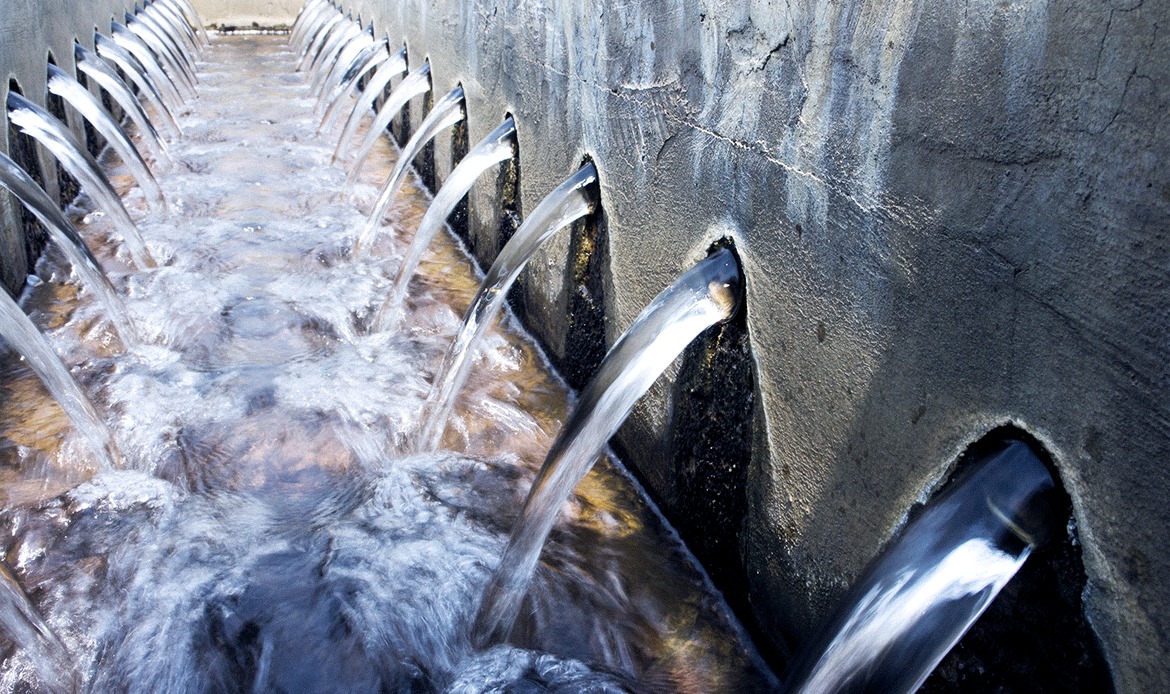
Reverse osmosis (RO) systems are one of the most effective methods for water purification. They operate on the principle of removing dissolved ions from water using membranes with pore sizes smaller than 0.0001 microns under high pressure. During this process, as water molecules pass through the membranes, dissolved salts and other contaminants are retained by the membrane, resulting in the production of high-quality, purified water.
Structure and Operation of Reverse Osmosis Systems
A reverse osmosis wastewater treatment plant consists of several key components:
- Membranes: These are the most critical components of RO systems. Membranes are used to effectively filter dissolved solids and other contaminants from water. Different types of membranes, such as BWRO (Brackish Water Reverse Osmosis), SWRO (Seawater Reverse Osmosis), and LFRO (Low Fouling Reverse Osmosis), are selected based on various water sources and purity requirements.
- Membrane Housings: These are structural elements where the membranes are placed, forming the configuration that integrates the system. These housings hold the membranes in place and ensure the proper flow of water.
- Feed and High-Pressure Pumps: These pumps provide the necessary pressure for water to pass through the membranes. High-pressure pumps are particularly important for water sources with high salinity, such as seawater.
- Pre- and Post-Treatment Units: These units are used to protect the RO membranes and optimize their performance. Pre-treatment units remove large particles and chemical contaminants from the water to prevent membrane fouling. Post-treatment units can further enhance the quality of water after the reverse osmosis process.
BWRO Membranes:
BWRO, or Brackish Water Reverse Osmosis membranes, are designed for the treatment of waters with moderate salinity. These waters are typically less saline than seawater but have mineral and salt concentrations high enough that they do not meet drinking water standards. BWRO membranes effectively treat dissolved salts, organic matter, and other contaminants in these types of water, producing clean and safe drinking water. BWRO systems are commonly used for low to medium salinity water sources such as groundwater, rivers, and lakes.
SWRO Membranes:
SWRO, or Seawater Reverse Osmosis membranes, are specifically designed for the treatment of seawater with high salinity. Since seawater has a very high salt concentration, SWRO membranes operate under high pressure to remove dissolved salts and other minerals from the water. These membranes are typically used in coastal areas, islands, and places with limited freshwater resources to convert seawater into drinking water. SWRO systems ensure maximum water quality by using membranes resistant to high salt passage and providing high efficiency.
LFRO Membranes:
LFRO, or Low Fouling Reverse Osmosis membranes, are developed to minimize fouling that can occur on the membrane surface due to organic materials, biological growth, and other contaminants in the water. LFRO membranes operate at low pressure, providing energy savings and helping the membranes remain clean for longer periods. These characteristics make LFRO membranes ideal for water sources with a high risk of fouling and reduce system maintenance and operating costs.
Applications of Reverse Osmosis Systems
Reverse osmosis systems have a wide range of applications in both domestic and industrial areas . In wastewater recovery plants, RO systems are used as a final treatment step, removing all contaminants from the water to produce colorless, softened, and organic-free water. This high-quality water can be used in factory production processes without requiring any additional treatment.
Benefits of Reverse Osmosis Systems
- High Efficiency: RO water reclaiming systems can remove up to 99% of dissolved salts and other contaminants from water.
- Flexibility: Various system configurations, such as BWRO, SWRO, and LFRO, are available to suit different water qualities and purity requirements.
- Low Operating Cost: With proper pre-treatment, the lifespan of RO membranes is extended, reducing maintenance and replacement costs.
- Environmentally Friendly: RO systems provide an eco-friendly water treatment solution by minimizing chemical usage.
As Ekosistem Engineering, we offer high-performance Reverse Osmosis water treatment plants tailored to your industrial and domestic water treatment needs. Our expert team is here to help you maximize your water quality and reduce your operating costs. Contact us today to easily solve your wastewater problems!

